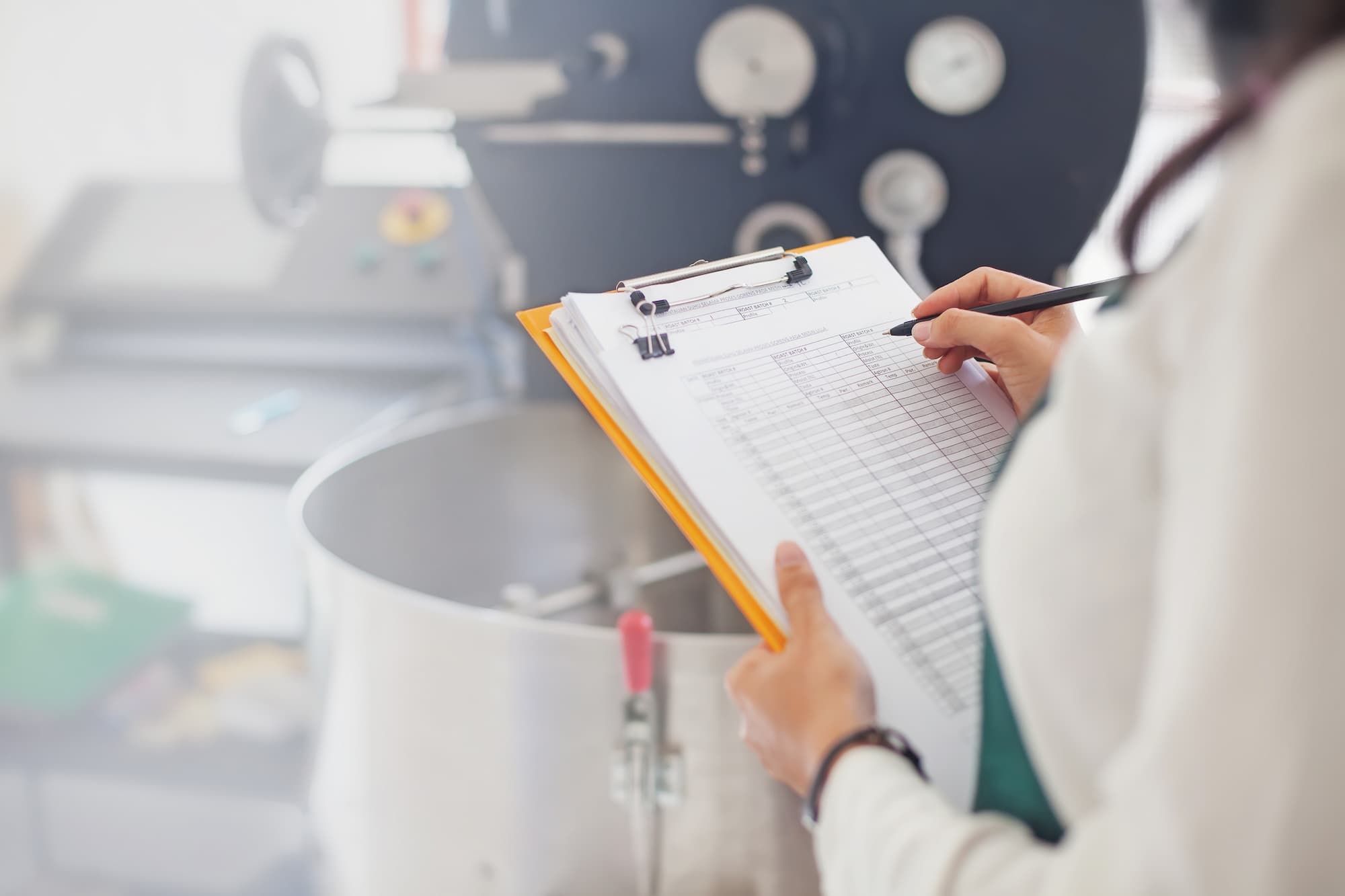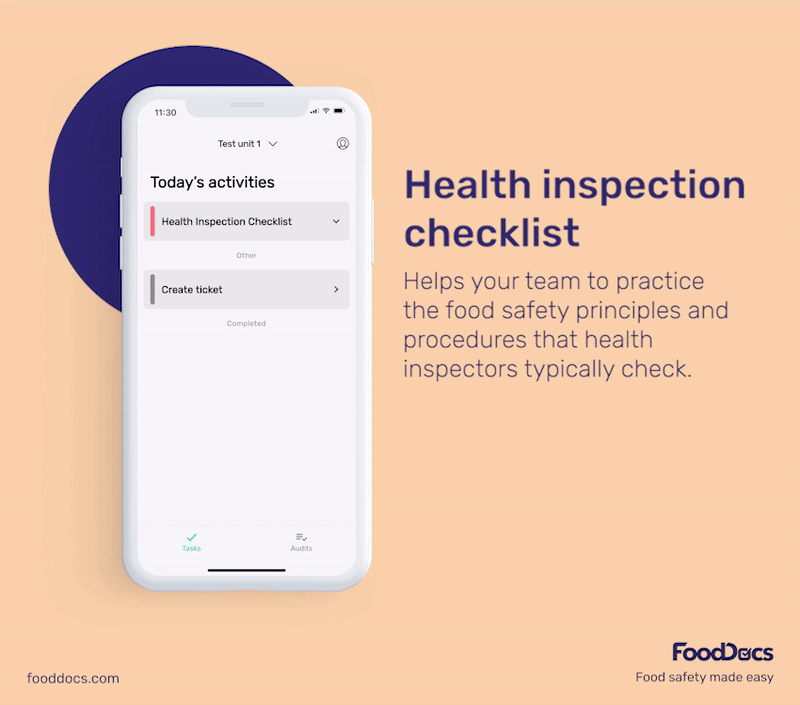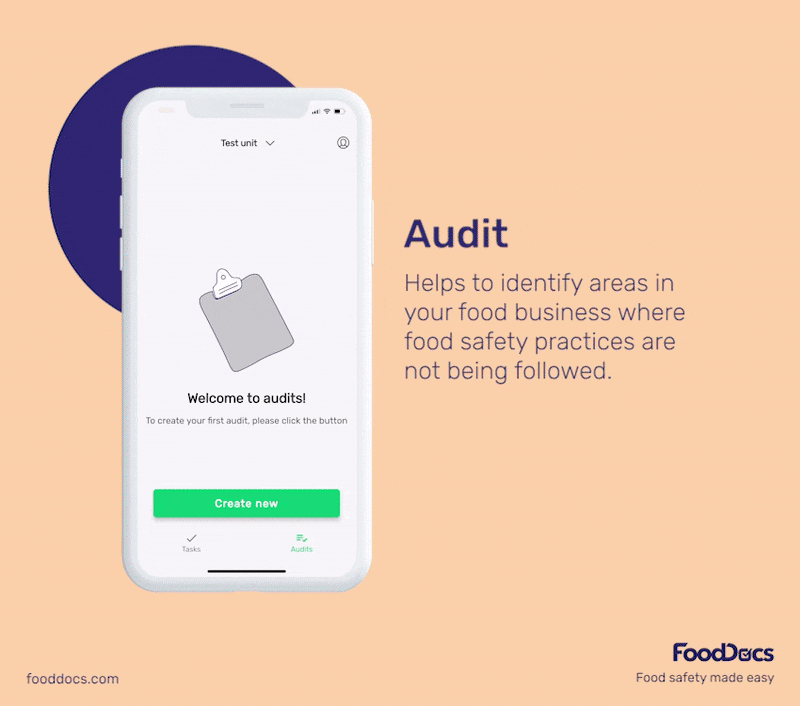Why Is Food Safety Important In Healthcare? Healthcare Leaders Guide
Learn challenges healthcare foodservice teams face today and key food safety practices to protect vulnerable patients. Get a free healthcare leader...
A strong food safety culture could help reduce the hundreds of millions of people who suffer from foodborne illness every year.
Every year, 600 million people suffer from foodborne illnesses. Out of these, 420,000 die. This sobering fact is enough to highlight the importance of a strong food safety culture.
Since we’re all about improving the lives of food business owners and their customers, this post will discuss everything you need to know about implementing food safety culture this year.
WHAT WE'LL COVER:
By definition, a culture of food safety refers to the practices and beliefs of an organization about the food they handle. This organizational culture is to be practiced by every person in the business, including everyone from junior employees to the leadership.
In addition, food safety culture should reflect in the behavior and attitude of each worker. Therefore, it is a lot more than food safety policies printed on a piece of paper. It's the entire mindset and lifestyle embraced by an organization — in other words, it's an organizational culture.
To become prepared for the GFSI audit, download our free GFSI audit checklist.

Now, when we say organizations, we are referring to food producers and restaurants. But sometimes, it may also include hotels, resorts, NGOs, etc. All organizations (from both public and private sectors) that are a part of the food chain in any capacity should have a food safety culture.
With that said, every organization defines its own culture of food safety. They set the values, rules, and principles, as well as acceptable and prohibited practices. All of these should extend to the following phases of food handling:
Consumption is often not in the hands of the organization but the consumer. But as someone who's selling food, you can take safety measures by delivering food in safe and hygienic packaging, and educating your customers about the importance of food safety and how you ensure it at your establishment.
SQF is short for Safe Quality Food, and it is a globally accepted certification for ensuring food safety and quality. The Global Food Safety Initiative (GFSI) endorses this certification, and we’ll discuss more about GFSI later in this article.
If you have a food business and it is SQF certified, you can publicly promise and claim excellent food products. And you can advertise your restaurant or manufacturing facility as SQF-certified, which can play a key role in winning consumer trust by highlighting your responsible behavior toward food safety.
You can apply for SQF certification via their website or get in touch with a representative. The SQF institute will brief you and your team about their strict quality standards and codes via an online course or in-person training.
Next, one of your employees will qualify as an SQF practitioner. This employee will be overlooking all types of food processes at your establishment. Following this, the SQF team will conduct an audit and certify your facility as safe. (See our internal SQF audit.)
This certification works for all business sizes, be it a large organization with thousands of employees or a small food delivery business.
A strong food safety culture is necessary to ensure that you offer high quality food and keep your customers safe. But that’s not the only reason why it’s important. It can also help you:
Practicing a strong food safety culture means ensuring the highest standards of food quality. If you deliver the best food quality, your customer base will automatically increase. More and more people will prefer buying from you (sometimes regardless of how your food tastes), meaning you'll make more sales and greater profits.
When customers buy once from you and are satisfied with the quality of food you deliver, they'll develop confidence in your product. They'll come to you to buy again, and they will recommend you to others. In this way, food safety culture is a means of increasing customer loyalty.
A healthy food safety culture speaks for itself. If your business practices it, you'll beat your competitors in no time. Companies with a strong food safety culture also usually have streamlined processes, committed employees, and high-standard deliverables, meaning the business flourishes.
If a customer finds you're breaching regulatory compliance and files a complaint against your business, you can land in legal trouble.
Plus, your existing customer base might shrink, and new customers will hesitate in trying your food.
To make it worse, other businesses in the food industry will hesitate in partnering with you when they know you’re facing legal issues due to food safety. And if you're a food manufacturer, you might have to recall one of your finished products, the average cost of which is $10 million in direct costs as estimated by a joint industry study by the Food Marketing Institute and the Grocery Manufacturers Association.
The situation could be even worse if the food you served caused a death, which may lead to the closure of your business.
The 5 aspects of food safety culture include equality, accountability, encouragement, teamwork, and training. Let’s discuss what each of these means for you.
Food safety rules are more likely to be practiced by all employees if the senior management practices them, which makes equality one of the most important core elements of food safety culture.
If the policies are not regarded by the top-level employees, juniors will violate the rules as soon as they have an opportunity to do so.
For example, suppose the workers in a department are not allowed to wear any accessories inside the building (like wristwatches). The department head should abide by the rule too and avoid wearing any accessories when entering the building.
Doing so will highlight the leadership's commitment to food safety, promote a strong sense of adherence and compliance in both new and old employees, and instill deep respect for food safety across all ranks.
Accountability is a major element of a robust food safety culture, and food quality and safety policies often penalize any members who do not follow the code of conduct.
For example, if you're not a chef and you refuse to trim your nails, the management may deduct your pay or charge you with a fine. They may even fire you on recurrent food hygiene violations.
Encouragement and employee engagement rank as the third most important element of a positive food safety culture. If you want everyone in your food business to practice all rules and regulations, you must encourage and reward individual employees because the role of employees and employee compliance is vital to your actual food safety performance.
For example, if an employee shows up in the right attire throughout the year, you can reward them with a bonus for their compliance.
Food safety culture makes your employees more aware of what's good for your business and customers and what's not. This, in turn, brings about a collective effort from the entire team to boost profits by maintaining high food safety standards.
Regularly training your employees via food hygiene workshops on basic elements like temperature control, food hygiene, personal hygiene, food safety behaviors, federal food safety requirements, and the human dimensions of food safety is also an essential part of the food safety culture.

Food safety compliance rules are always evolving, and it helps when your team knows the latest dimensions of food safety, allowing for continuous improvement.
When learning newer stuff and making a positive impact on society, employees also develop a sense of ownership. Thus they remain loyal to both the organization and the safety culture.
GFSI is short for the Global Food Safety Initiative. It is a voluntary program launched by food safety experts back in 2000.
The GFSI helps food businesses develop efficient food management systems in a bid to promote food safety. They do so by reviewing your food safety policies and ensuring they are up to the mark.
In addition, they visit food facilities and interview employees to check if the documented food safety policies are being practiced. They also track the ongoing food safety practices of a food business by surveying its customers.
Some of the benchmarked schemes and certifications that the GFSI recognizes are as follows:
As a business, you can choose a scheme from this list and submit an application to get certified.
Next, food safety experts associated with the scheme will audit and certify your food business for food quality and safety.
Creating a food safety culture is not an easy job. But here's a systematic approach to the process:
When building a food safety culture from scratch, the efforts should begin with leadership. This might not be a problem for small restaurants. But when it comes to larger businesses, all leaders (including owners, managers, and heads of departments) should come together to discuss their vision for food safety culture, the food safety culture plans they want to follow, and the food safety goals they want to set.
They should discuss what they wish to achieve in terms of food safety and apply for relevant certification, which is the first step of implementation of food safety. Plus, managers and heads should be provided a clear guide on what to achieve, so they can direct their teams accordingly.
Next, the managers and heads should discuss the importance of a food safety culture and the company's food safety objectives with the employees.
Instead of asking them to wear gloves or store food items in a certain way, explain to them why they need to do so.
If possible, also promise them rewards for following good food safety practices, which can dramatically improve their behaviour toward food safety.
Finally, it's also important to gather employee feedback on how they think the management can help them make food production processes safer. This can be by creating and publishing a food safety culture questionnaire, for example.
Following this briefing session, train your employees on human behaviors that can propel the business towards food safety success.
For example, if you're bringing in a new cleaning chemical into use or prefer a new packaging method, arrange a workshop to train your workforce on the new technology.
Similarly, you can train them on how to check the quality of raw ingredients that come in and deal with basic food safety hazards.
Some of your employees might need a little upgrade, so equip them with the right kitchen equipment as well as personal equipment to ensure they can follow food safety guidelines.
For example, you might need to keep thermometers and other types of detectors to improve the quality of food served at your food business.
In addition, it’s a good idea to adopt digital food safety management systems to modernize your approach to food safety. For example, we now have AI-based tools that can help you create an HACCP plan, which is vital for maintaining high food safety standards.
Another example of modern food safety tech is our digital food safety management system, which offers:
Of course, you might need some food safety knowledge and basic food safety management training but our tool makes the overall process super easy.
Monitoring procedures and food safety efforts is the most crucial part of successful food safety programs.
For example, you can conduct regular self-inspections by buying your own food and checking its quality for continual improvement.
Some other things you can regularly check include:

How to improve food safety culture with FoodDocs
There are things you can do inward-facing and outward-facing to strengthen your food safety culture.
For example, implement a digital food safety management system that makes monitoring so easy that any health inspector who walks into your business will be impressed.

Oftentimes, food businesses forget to focus on their customers when it comes to food safety. Sure, you can have the best kitchen in the world but it will do you no good if you fail to identify and prevent a food allergy reaction.
So one great way to improve your food safety culture is by creating a questionnaire for the buyer. Ask them if they are allergic to something or if they want to avoid a foodstuff.
In addition, you can get regular third-party food safety audits to ensure everything in your facility is up to par.

Food safety professionals also suggest that upgrading employee food safety training and your equipment on a regular basis can lead to dramatic improvements in your company culture.
Finally, calculating food safety metrics and linking an employee reward program to your safety culture is an excellent way to boost your food safety performance.
Learn challenges healthcare foodservice teams face today and key food safety practices to protect vulnerable patients. Get a free healthcare leader...
Learn what Standard Operating Procedures (SOPs) are and how to write effective SOPs that ensure consistency, efficiency, and safety in your...
Boost your retail food safety with essential practices and digital tools to protect customers and your brand. Plus a free Retail Food Safety Leader...